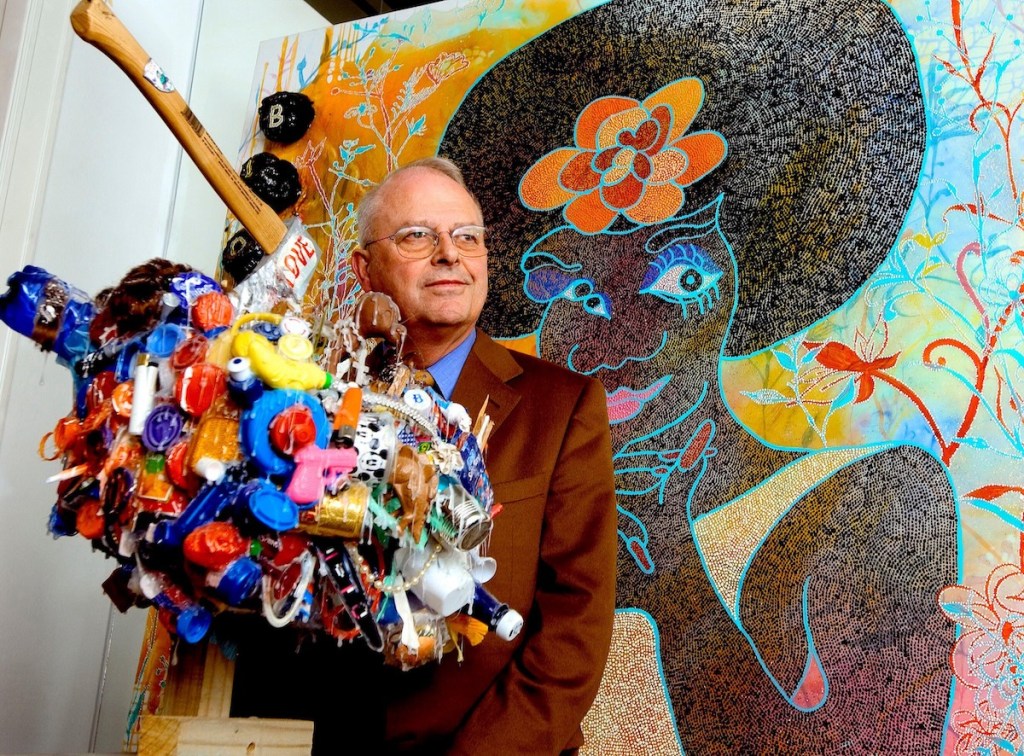In October, Christie’s will host a single-owner sale of works from the collection of Ole Faarup, a Danish businessman whose five-decade pursuit of contemporary art mixed Scandinavian heavyweights like Karin Mamma Andersson and Asger Jorn with international stars including Jean-Michel Basquiat and Tracey Emin.
The sale, with a high estimate of £22 million, will be a major test of the upper reaches of the art market—a segment that has not performed well in recent years.
Anchoring the sale are two of Scottish painter Peter Doig’s most sought-after canvases. The top lot is Country Rock (1998–99), a ten-foot panorama of Toronto’s rainbow-painted tunnel, expected to fetch between £7 million and £10 million. The image first appeared on the catalogue cover of Doig’s 2008 Tate retrospective and has since become one of his signature evocations of place filtered through “memory and myth,” according to the auction house. Alongside it is Ski Jacket (1994), estimated at £6 million to £8 million, based on a grainy newspaper photograph of a Japanese ski resort in which compact ranks of tiny skiers dissolve into abstraction. Both paintings date from the period when Doig’s 1994 Turner Prize nomination marked him as one of Britain’s most promising painters.
The third major lot is Blossom (1997) by Chris Ofili, estimated at £1 million to £1.5 million. Executed between his notorious The Holy Virgin Mary and No Woman, No Cry, the work layers African iconography, Catholic imagery, and glittering, textured surfaces, including the artist’s trademark use of elephant dung. It has featured prominently in retrospectives in London and New York and stands as a keystone of Ofili’s mid-career output.
Faarup’s taste was broad but consistent in its appetite for early work by artists who would go on to define their generation. Among the smaller but still notable trophies is an untitled 1982 oilstick drawing by Basquiat (£300,000–£500,000), from the year of his Documenta debut.
The auction is structured across Christie’s 20th/21st Century Evening and Day sales in London on October 15 and 16, with an online component running earlier in the month. Highlights will be shown in Copenhagen, Hong Kong, and New York before arriving in London.
Faarup began collecting in the 1960s while working for Danish designer Georg Jensen in New York, where visits to MoMA kindled a fascination with emerging art. Returning to Denmark, he built the furniture and design business 3Falke and assembled a collection that mixed Danish modernists such as Jorn and Per Kirkeby with newer voices including Andersson, Neo Rauch, and members of the Young British Artists. His home became an informal gallery, with works rotated in and out as his interests shifted.
The newly formed Ole Faarup Art Foundation, which will receive all hammer proceeds, is charged with exporting Danish art—particularly by those under 50, from the mainland, the Faroes, and Greenland—to institutions abroad. It will also donate international works to Danish museums, promoting exchange in both directions.
Christie’s is betting that the combination of blue-chip names, fresh-to-market material, and a philanthropic cause will draw bidders in a market that has cooled but still rewards scarcity at the top. For Danish artists hoping for a break abroad, the sale may prove just as pivotal.
